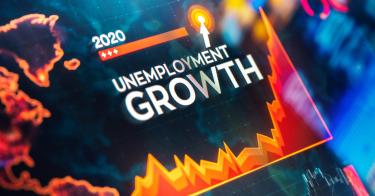Insufficient income bears the blame for all sorts of problems.
If all jobs paid at least $15 per hour, it might seem that many people’s struggles could be relieved. And perhaps fewer government welfare programs would be needed.
That’s part of the premise behind the populist push for an unprecedented doubling of the federal minimum wage, from $7.25 to $15 per hour.
The problem with policymakers trying to raise workers’ incomes through government mandates is that laws can’t create additional income—they can only redistribute it. What relieves one person’s struggles increases another’s woes—and creates a whole host of unintended consequences.
Imagine a whole town made up of different-size Jenga block towers. To raise the height of some towers requires taking pieces out of other towers. But that leaves some towers unstable, and yet others fall to pieces. The larger the increase for some, the more widespread the destruction for others.
A 107% increase in the federal minimum wage could wreak havoc on many workers, businesses and families.
Foremost will be the job losses. A Congressional Budget Office study estimated that one out of every 14—and potentially as many as one out of every four—low-wage workers would lose their jobs.
That was a pre-pandemic estimate. Implementing a national $15 minimum wage now would be like throwing gasoline on fire for industries that have been hardest-hit by COVID-19.
Nearly one in every five restaurants permanently closed their doors in 2020 as employment in food services fell 19%. Meanwhile, retail clothing jobs dropped 24% and accommodations jobs (hotels) plummeted 32%.
The hope with many of these COVID-19 job losses is that they will come back once the health crisis subsides.
But jobs lost to the minimum wage won’t come back. A whole cohort of workers could have no place in the formal labor market. Where will young, less-educated workers or those with limited English language skills, disabilities or a criminal record go to get their foot in the door?
>>> Would a $15 Minimum Wage Help or Hurt Low-Income Workers?
At $15 per hour, any job that produces less than about $36,000 per year becomes unprofitable.
Employers can try raising prices, but that will reduce demand for their goods and services.
Families already struggle to afford child care. How many would be priced out of the market with a 25% increase in costs? And how many people will buy fast food if its prices rise 38%?
Add to that job losses and price increases, a smaller economy, lower family incomes, more automation, and higher interest rates, inflation and deficits—according to the CBO. Crime would likely increase, also.
While the effects would be widespread, they would not be equal. Women and minorities would be harder hit, as would teenagers and individuals with less education and experience.
Moreover, low-cost areas could be devastated. A $15 minimum wage in Mississippi would be like a $35.74 minimum wage in Washington, D.C. That’s way higher than what lawmakers who support the $15 minimum wage pay many of their D.C. congressional staffers.
Even high-cost areas that have implemented $15 minimum wages have experienced survival-of-the-fittest employment declines, as workers who lose hours and jobs have to go outside the city, and some businesses relocate or close their doors completely.
An analysis of the economic effect of a $15 minimum wage in the wealthy D.C. suburb of Montgomery County, Maryland, estimated that it would cause one out of every three low-wage jobs to disappear from the county.
The unfortunate reality is that a $15 minimum wage would do far more harm than good, with the biggest consequences accruing to the most marginalized workers.
>>> EVENT: The Faces of a $15 Minimum Wage
Artificial wage increases come with nasty side effects—like the disrupted Jengatown.
But authentic wage increases that come from workers producing more value have positive effects—like adding new blocks to the Jengatown.
Amid a strong economy, fewer unnecessary regulations and lower taxes on job creators, low-income workers’ wages increased 13% between 2016 and 2019. Moreover, the sharing economy has opened doors and opportunities to workers of all ages, abilities and income levels to earn income on their own terms.
Imposing a $15 minimum wage on small businesses—as many are struggling to survive—is indefensible. Unfortunately, by the time policymakers realize the damage a $15 minimum wage will cause, it will be too late to negate the consequences.
This piece originally appeared in the Kansas City Star




